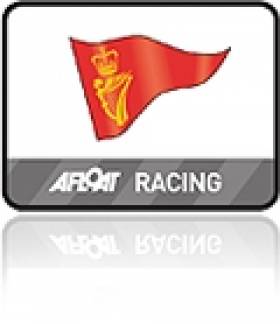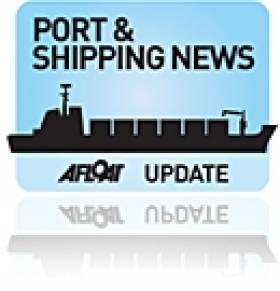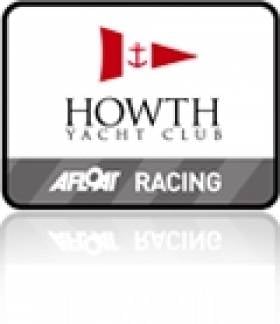Displaying items by tag: New York
O'Leary's Set for New York Show Down
Royal Cork's Anthony O'Leary returns to New York's Invitational Cup next week for another crack at the Rolex event that has attracted 22 teams.
Despite no previous experience with the Swan 42, Anthony O'Leary's team from the Royal Cork Yacht Club got off to a blazing start at the 2009 Invitational Cup, scoring a third and two firsts in the opening three races. From there the team rode a bit of a roller coaster with three more top-five finishes, a 13th, and two 17ths. The end result was fifth, a bit disappointing given the quick start, but respectable, nonetheless. More importantly, it earned O'Leary and his team a return invitation.
When racing begins on Tuesday, September 13, at the 2011 New York Yacht Club Invitational Cup presented by Rolex, most of the 22 participating yacht club teams will be fresh from racing at the peak of the sailing season in the northern hemisphere.
Last year, O'Leary was named the Afloat Irish Independent Sailor of the Year for, in part, leading the Irish team to the win at the 2010 Rolex Commodore's Cup."We will continue to sail [the Ker 39] Antix up to mid-season in handicap fleets, as our boat is similar in characteristics to the Swan 42," says O'Leary of his preparations for the Invitational Cup. "Closer to September we will focus more on one-design sailing, which is really the ultimate challenge as shown in the Invitational Cup. Apart from our not finishing on the podium, there was not a single disappointing aspect of the 2009 regatta. The entire event was a great experience, superbly organized by a wonderful club."
O'Leary was still assembling his crew, but it will surely include some family members. Son Peter O'Leary sailed in the 2008 Olympics in the Star class while Nicholas O'Leary, a three-time All-Ireland sailing champion, served as the team's tactician during the 2009 Invitational Cup.
Three teams though – the Cruising Yacht Club of Australia, Royal Cape Yacht Club and Yacht Club Argentino – which hail from below the equator, will be coming from winter to summer to race in Swan 42s for the championship title. "It is an honor for the Yacht Club Argentino (YCA) to participate this coming September," said Commodore Ricardo Galarce. "We are proud of sharing such an important regatta with well-known clubs from different parts of the world.
Besides, it is nice to share with all of them the same objective of competing with fair play and sailing which is what we love doing. We will go to New York Yacht Club's Harbour Court ready to have fun, but we will be doing our best effort to take the cup back to our beloved YCA in Buenos Aires." Galarce explained that even though it is winter in Argentina, the weather is not so cold and the sailors are used to sailing in this season. After the invitation to the event was published in the YCA magazine, any club member who wanted to join the team was encouraged to do so. A team selection was then made taking into account sailing resumes, technical skills and personalities, in order to form a complete, competitive and compatible crew.
Because there was a boat similar to the Swan 42 available for their use in Mar del Plata, the YCA team traveled 400 km to spend a weekend there performing intensive training, "with very good results and lots of learning as regards each of the crew members' functions and movements," said Galarce. "We then carried on our training in Buenos Aires, always trying to sail in boats similar to the Swan 42, which we know is an excellent boat, which demands a lot from its crew." With only two of the crew having previously sailed in Newport – Santiago Braun and Francisco Billoch who each sailed the Onion Patch Series in 1972 – the YCA team is studying the weather forecasts, tides and winds, in order to gain some local knowledge. And the team hopes to become familiar with the Swan 42 in the short time between their arrival and the start of the Invitational Cup. "We know it won't be an easy regatta," concluded Galarce. "We are proud of being able to sail alongside sailors who belong to the most distinguished sailing clubs in the world. We wish them all good luck, and we hope to share great fun on the water."
In Australia where the average sailing temperature for the Cruising Yacht Club of Australia's (CYCA) winter series is 20 degrees Celsius (68 Fahrenheit), sailing is a year-round activity, and all of the CYCA team members race throughout the year in various club events. Most of the CYCA crew that will travel to Rhode Island sailed together for the first time in April on the Corby 49 Vamp in the New South Wales IRC championships, finishing third overall. Vamp then finished second in Division 1 in the recently concluded CYCA Winter series. "None of us have experience in the Swan 42s although most have sailed in similarly equipped and designed yachts over a range of sizes up to the TP52 class," said David Fuller, CYCA Team Manager. "Whereas we have not had many opportunities to sail together, most of our crew have continued to sharpen their skills on other boats in the various races and regattas along the Australian coast and overseas." CYCA tactician Evan Walker is one of those who have been away from Sydney, having recently been at Weymouth, England, to coach an Elliot 6m team at the 2012 Olympic test event.
Before coming to Newport, however, Walker will be racing as tactician in the Cartagena round of the Audi MedCup with an Australian Soto 40 team. "Hopefully the week of sailing as tactician in Spain will have me hitting my straps by the time I arrive in Newport," said Walker, a CYCA Youth Academy graduate who has seen success as a match racing skipper. "I'm very excited to be competing in the Invitational Cup and I'm sure we'll have an enthusiastic team bonding session on our arrival in Newport." David Hudson, skipper of the team from the Royal Cape Yacht Club (RCYC) in South Africa was also at the Olympic test event. "Regarding our preparation for the Invitational Cup, it's obviously not as convenient for us as it would be if the event took place towards the end of our racing season," said Hudson. "However, winter training in Cape Town is perfectly feasible from a weather point of view. At 34 degrees south we have a Mediterranean climate with warm dry summers and cold wet winters, and although we have recently had some snow on the mountains just to the east of our sailing waters, Cape Town seldom gets really cold."
And while none of the RCYC team has any experience racing Swan 42s, they too have been training on a variety of boats of similar size. "We are all looking forward to the challenge," said Hudson. John Martin, RCYC's Commodore and team manager, lived on yachts from the age of eight and cut his teeth in 1971 aboard a new Swan 37 imported to South Africa specifically to do the Cape to Rio race, starting as bowman and working his way back. So it is very apt for him to be sailing a Swan 42 in this regatta, all these years later.
Not only is Martin the most famous yachtsman in South Africa but also he is well-known internationally. "Newport has great memories for me," said Martin. "During my single- and double-handed sailing career, 1981–1991, I had the honor of winning a few races, most importantly, winning the last leg of the 1986/87 BOC Singlehanded Round the World Race which finished in Newport. It is with great delight that I return with a very competent and competitive sailing team to represent the club of which I have been Commodore for the past three years."
An official practice for the 22 yacht club teams will take place on Monday, September 12, from 1300-1700, followed by the opening ceremony for the Invitational Cup. Five days of racing will ensue, with the first warning signal scheduled for 1100 each day.
The winning team will be confirmed at the conclusion of racing on Saturday, September 17. In addition to Rolex, which for 2011 and 2013 is the presenting sponsor, Sperry Top-Sider and Nautor's Swan have also returned, and are joined by Atlantis WeatherGear, as sponsors to enhance the experience of competitors as well as those who will be following the races.
The New York Yacht Club Invitational Cup presented by Rolex NYYC's Harbour Court will host 22 yacht club teams – representing 16 nations from six different continents – with racing on NYYC Swan 42s on Rhode Island Sound and Narragansett Bay from September 10-17, 2011. By country, the roster of participating teams is: Yacht Club Argentino (ARG); Cruising Yacht Club of Australia (AUS); Royal Bermuda Yacht Club (BER); Royal Canadian Yacht Club (CAN); Royal Hong Kong Yacht Club (HKG); Real Club Nautico de Barcelona (ESP); Nyländska Jaktklubben (FIN); Itchenor Sailing Club, Royal Ocean Racing Club and Royal Yacht Squadron (GBR); Norddeutscher Regatta Verein (GER); Royal Cork Yacht Club (IRL); Yacht Club Capri and Yacht Club Punta Ala (ITA); Japan Sailing Federation (JPN); Royal Norwegian Yacht Club (NOR); Clube Naval de Cascais (POR); Royal Cape Yacht Club (RSA); and Eastern Yacht Club (Marblehead, Mass.); Annapolis Yacht Club (Annapolis, Md.); Newport Harbor Yacht Club (Newport Beach, Calif.); and New York Yacht Club (Newport, R.I.) from the USA.
The Empire Strikes Back
The 14,620 dwt US-based training-ship Empire State made a return call to the Port of Cork last night for a four-day stay, writes Jehan Ashmore.
At over 172m long the cruiser-sterned vessel with a port of registry of New York, moored at the Cobh Cruise Terminal which was recently visited by another US training ship, State of Maine (click HERE).
The veteran vessel now in her sixth decade of service and is the also the sixth training-ship to carry the name 'Empire State' for the State University of New York (SUNY) Maritime College.
Empire State was laid down as SS Oregon at the Newport News Shipbuilding and Drydock Company, Newport News, Virginia. She was launched in 1961 for the States Steamship Company and delivered a year later for service in the Pacific trades. For further information about the vessel's interim career before she was converted for her current role click HERE.
Despite her conversion she still presents a distinctive profile with the superstructure positioned amidships between the cargo-holds.
Prior to the Empire State's arrival the French cruiseship Le Diamant departed Cobh for an overnight passage to Dublin, where last year the Empire State made a port of call.
The next cruise-caller to Cobh is the 296-passenger Silver Cloud which is scheduled to dock on Monday evening.
- Dublin Port
- Cobh
- Cork Harbour
- port of Cork
- New York
- Silver Cloud
- Cobh Cruise Terminal
- Cruiseships
- Cork Harbour News
- State of Maine
- Port of Cork News
- Training Ship
- Empire State
- Suny Maritime College
- La Diamant
- Newport News and Shipbuilding
- Newport News
- States Steamship Company
- State University of New York
Irish Teams Third and Fifth in New York
After 3 very intense days of international competition at the Dennis Connor International Yacht Club Challenge, the Irish teams consisting of Royal Cork Yacht Club finished 3rd, Howth Yacht club finished 5th overall beating some very talented opposition including the two local Manhattan Yacht Club teams.
The event was sailed in a fleet of J24's and the RCYC boat was skippered by Stefan Hyde and the Howth Boat by Emma McDonald.
In fact if it was not for a penalty after a collision in race 4 (Under Regatta rules, if a collision occurs, both boats have to do turns no matter who is in the right / wrong) and the cancellation of race 7 on the last beat due to a approaching thunderstorm - podium positions for both teams could have beckoned.
The regatta was sailed in the very busy waters of the Hudson river in New York City which along with the challenges of avoiding commercial traffic, some of the strongest currents that the crew have ever experienced had to be negotiated in varied winds from 5knts on the opening day to 30knts plus during approaching thunderstorms on the final day. The 3rd Irish team; Wexford Harbour Yacht and Tennis Club finished in 10th place.
The event was won by the team from Switzerland - Societe Nautique Rolloise followed one point behind by USA - Southern Yacht Club and then a fantastic 3rd place by the Irish team from Royal Cork skippered by Stefan Hyde.
It is tradition on presentation night that each team presents to the team that finishes behind them in the final results a humourous prize.
4th place Austrian team presented the HYC team with "Lederhosen".
Howth Yacht Club also presented Commodore Michael Fortenbaugh of Manhattan Sailing Club and Dennis Connor (Americas Cup Hero) with HYC Burgees.
A fantastic event in a wonderful city that certainly promoted international goodwill through friendly competition.
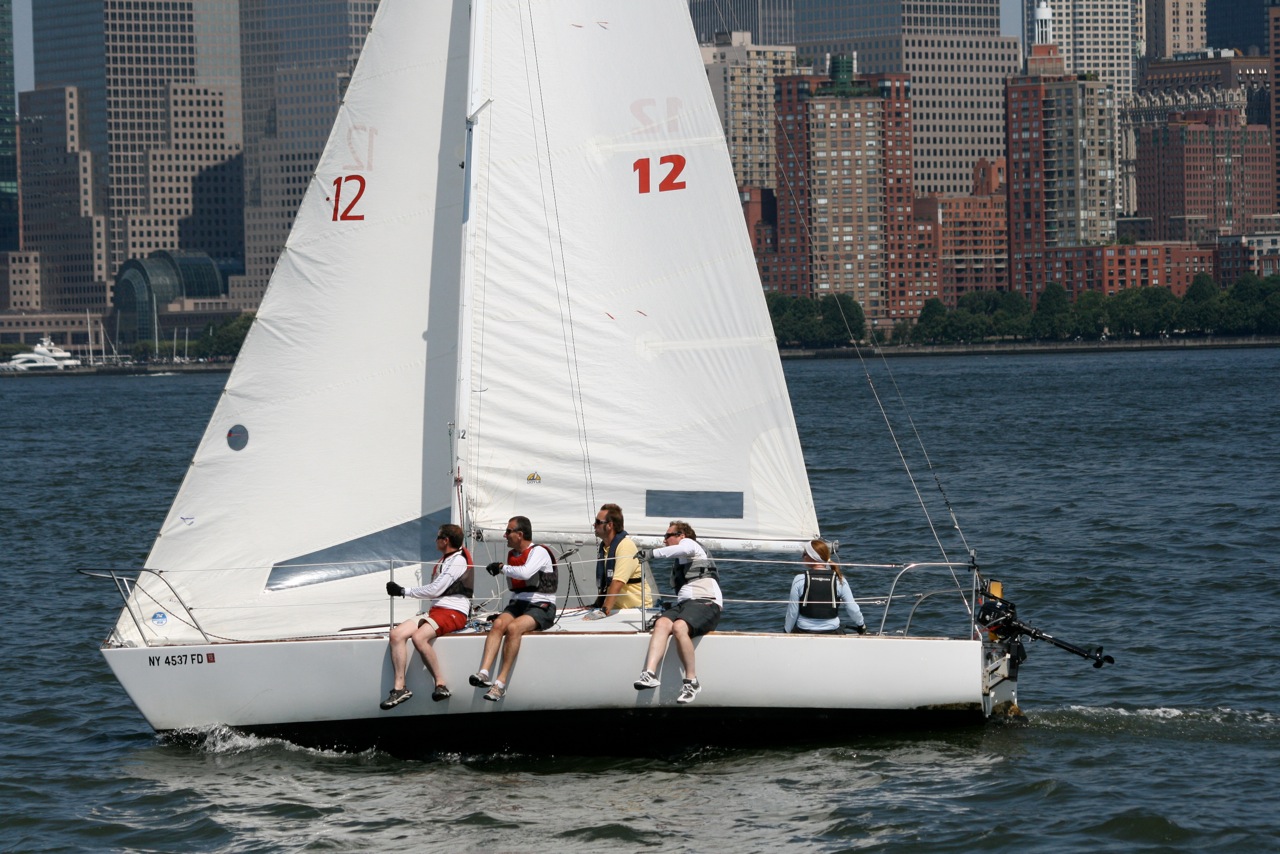
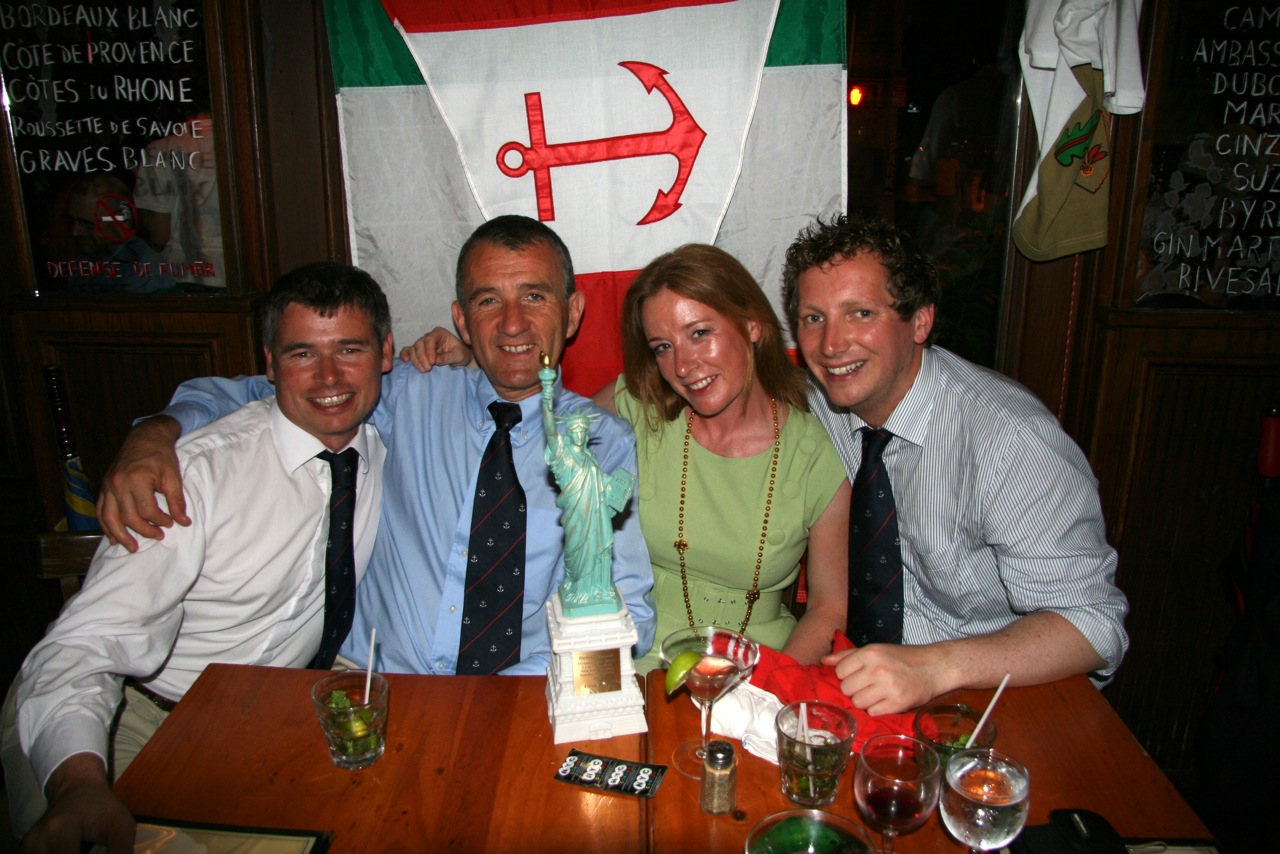
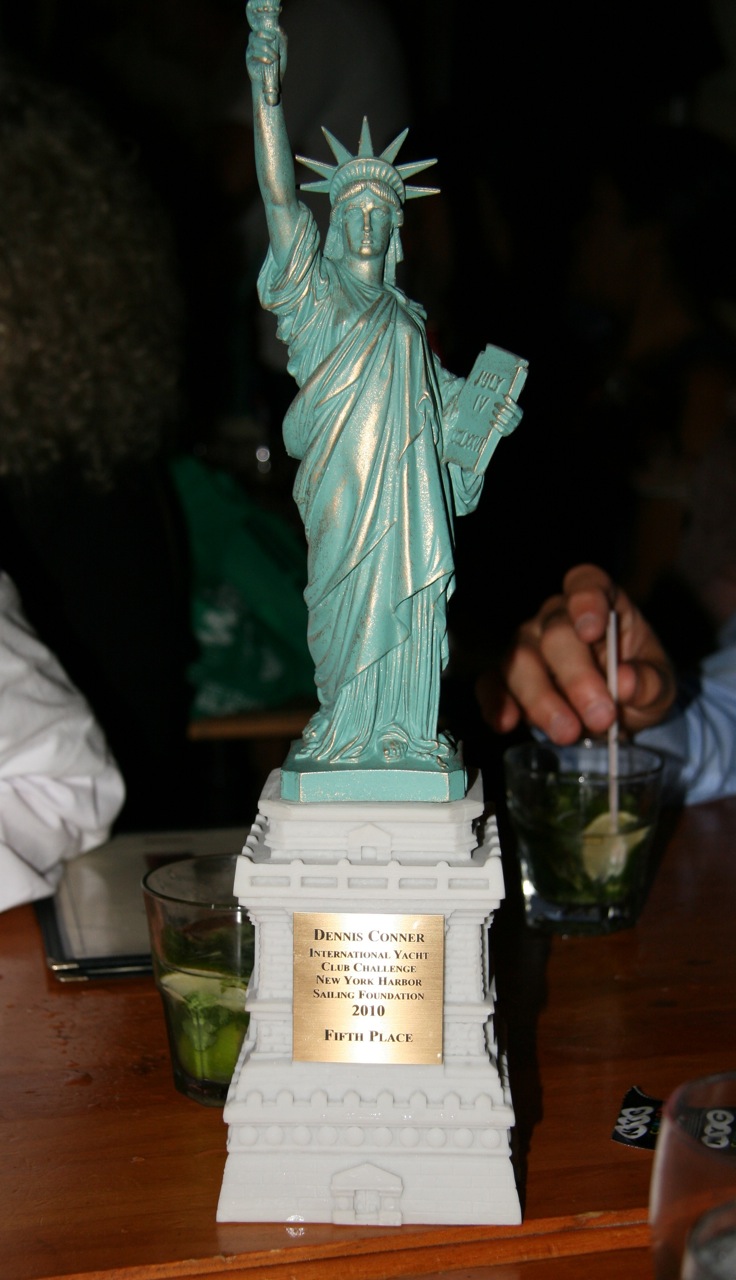
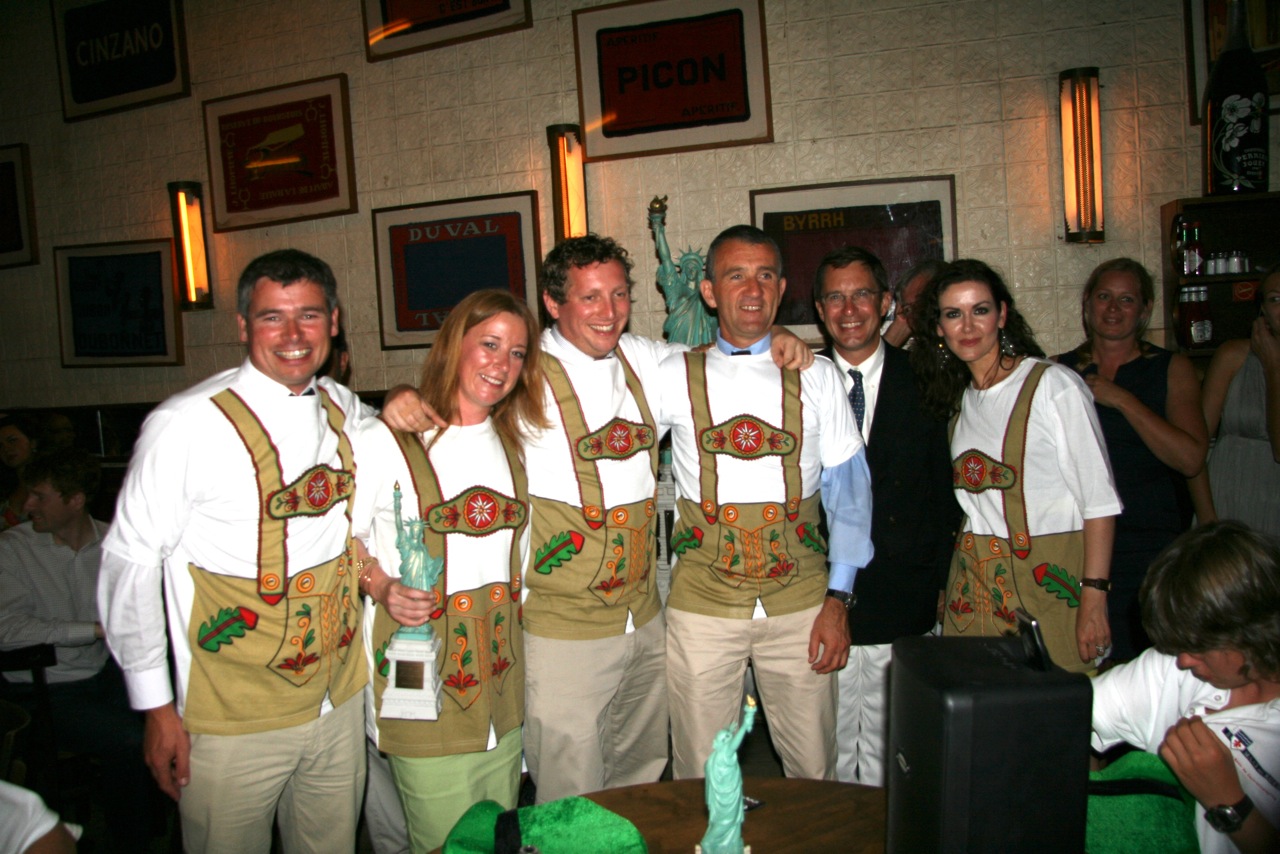
Fourth of July Cruise Ends in Deportation
It was an Independence day party of a different kind - a boarding party - that led to an Irishman getting his marching orders from the US Department of Homeland Security. While on a pleasure cruise off Long Island, Dave Quinn found himself part of a boarding and interrogation that has led to his deportation from the US.
David Quinn, a horse-and-carriage driver who has been in America since his visa expired in 2003, was out on his girlfriend's uncle's yacht, when its foreign registration caught the eye of customs and coast guard officials.
Federal maritime law in the US states that boats registered in other territories must contact customs officials upon arrival at American ports, even when their journey has begun from another American port.
The boat had been registered in St Vincent & the Grenadines, a common practice by US boat owners for tax purposes. The unfamiliar flag drew attention, and the 63-foot yacht was boarded by officials. When the passengers and crew were questioned, Mr Quinn and a Guatemalan caterer were unable to prove they were in the US legally. Quinn was detained, and has subsequently been released and given a 28-day period to prepare for deportation.
The entire saga is detailed in a New York Times news feature here.


























